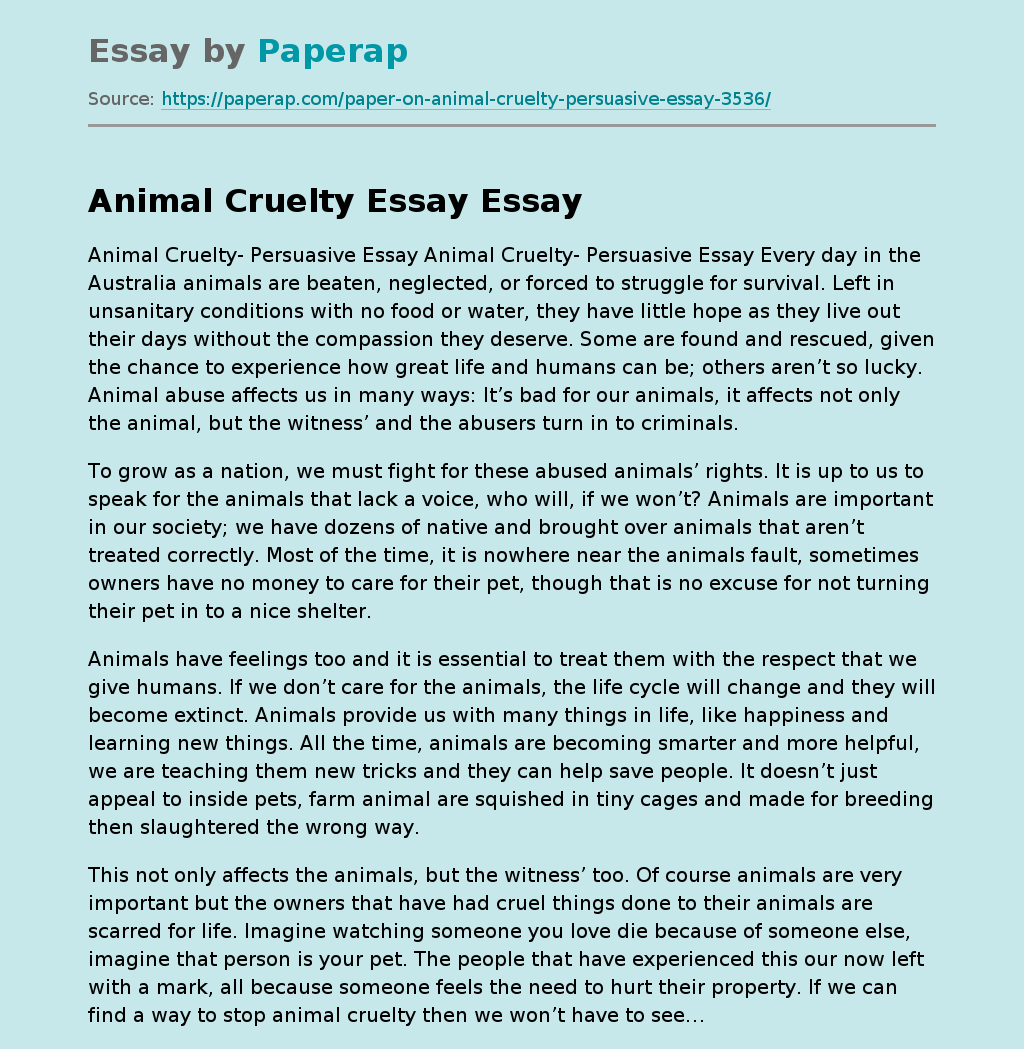Crafting a compelling argumentative essay against animal cruelty is both a formidable challenge and an opportunity to amplify the voices of those who cannot speak for themselves. Have you ever contemplated what drives a person to neglect or harm an animal? This question provokes thought yet also lays bare the complexities of human-animal relationships. In this essay, we will systematically dissect the components necessary for developing a powerful argument against the egregious act of animal cruelty.
Understanding Animal Cruelty
Before undertaking the construction of an argument, one must engage in a comprehensive exploration of animal cruelty itself. This term encompasses a multitude of offenses, including neglect, physical abuse, and emotional harm inflicted upon animals. Furthermore, it is imperative to distinguish between different forms of cruelty: domestic abuse, animal testing, and exploitation in entertainment or agricultural industries. Each variant has its nuanced implications and consequences, demanding distinct approaches in argumentative discourse.
Research with Purpose
A potent argument is anchored in thorough research. Delve into statistics that reveal the prevalence of animal cruelty. According to various studies, millions of animals suffer annually due to abandonment or maltreatment. Use credible sources such as academic journals, reputable organizations, and legal frameworks that outline animal protection laws. Scrutinizing case studies can also illustrate the cyclical nature of cruelty—where neglect begets more neglect. These evidentiary foundations lend credibility and resonate with the audience’s compassion.
Establishing a Clear Thesis Statement
The linchpin of your essay is a well-structured thesis statement. This statement should encapsulate your primary argument in a concise manner, setting the stage for the ensuing discourse. For instance, a thesis may read: “Animal cruelty is a pervasive societal issue that not only imposes suffering upon sentient beings but also reflects broader moral failings within our culture.” By articulating the broader implications of animal cruelty, you can engage readers on both emotional and intellectual levels.
Logical Structure and Cohesion
Following the establishment of a thesis, the essay must exhibit a logical flow. Structuring your argument into clear, coherent sections enhances readability. Start with an introduction that outlines the significance of animal rights, followed by body paragraphs that delve into specific aspects of cruelty—defining terms, recounting statistics, and presenting testimonials or expert opinions that bolster your claims. Each paragraph should transition smoothly, linking back to the overarching thesis while offering fresh insights.
Addressing Counterarguments
One of the hallmarks of a formidable argumentative essay is the acknowledgment and analysis of counterarguments. It is crucial to anticipate objections that skeptics may raise. For example, some may argue that animal research is necessary for medical advancements. Responding to this claim with a well-grounded rebuttal is essential. Highlight alternative research methods, such as in vitro testing or computer simulations, which can achieve similar results without subjecting animals to harm. Addressing counterclaims not only demonstrates a nuanced understanding of the topic but also underscores the strength of your primary argument.
Appealing to Ethics and Emotions
While logical reasoning forms the backbone of any argument, the persuasive power of an emotional appeal should not be underestimated. Engaging the audience’s empathy can catalyze awareness and action. Utilize vivid imagery and narratives that illustrate the plight of animals suffering from abuse. Consider sharing a particularly harrowing or uplifting story—such narratives can be profoundly persuasive. They evoke visceral reactions, prompting readers to reflect on their ethical stance regarding animal welfare.
Proposing Solutions
Conclusion is not merely a restatement of points; rather, it must champion a call to action. Propose tangible solutions that can be implemented to combat animal cruelty. This might include advocating for stronger legislation, supporting animal rescue organizations, or encouraging community outreach programs. By empowering readers with actionable steps, your argument transforms from mere words on a page into a rallying cry for change.
Crafting a Compelling Conclusion
Your conclusion should encapsulate the essence of your essay, reiterating the detrimental impacts of animal cruelty while reminding readers of the ethical imperatives associated with combating it. The challenge remains: how can we, as a society, foster a culture of respect for all living beings? By posing this question, you leave the reader in a state of contemplation, reinforcing the need for a collective commitment toward change.
In summation, writing a compelling argumentative essay against animal cruelty necessitates meticulous research, a clear argument structure, and an emotional connection with the audience. By amalgamating these elements, one can effectively engage with and challenge societal attitudes towards animal welfare, steering discourse toward a more humane world. As the conversation unfolds, it becomes crucial to remember that the ultimate goal is not merely to persuade, but to inspire a fundamental shift in perspective regarding the treatment of our fellow creatures.










